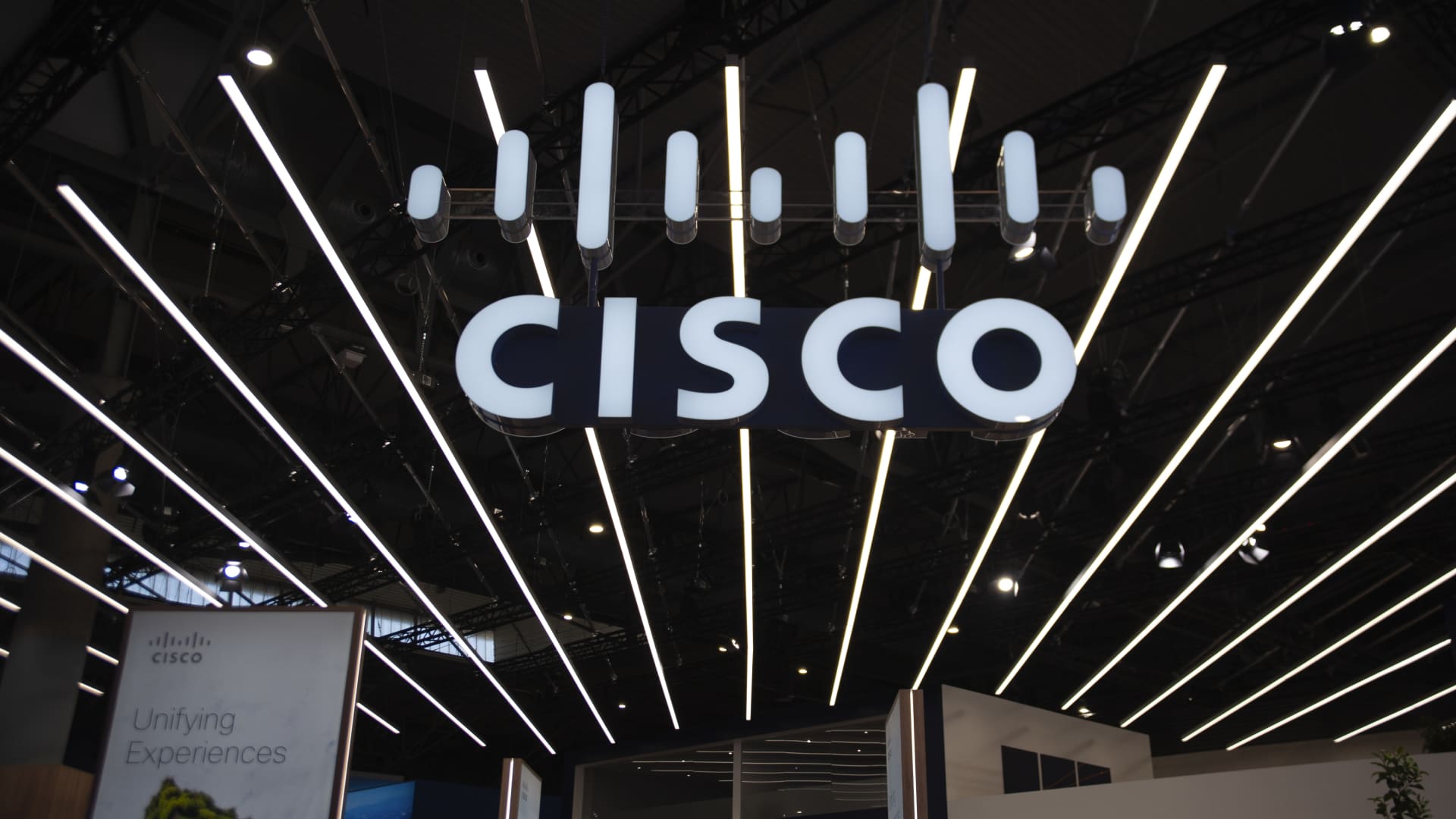Enterprise technology titan Cisco Systems on Thursday unveiled a new security architecture product aimed at securing data centers, clouds, and other IT environments with the help of AI.
Called HyperShield, the product uses AI to protect applications, devices, and data across public and private data centers, clouds, and physical locations, according to a company press release.
HyperShield follows the company’s $28 billion acquisition of Splunk last year, a cybersecurity company competing with the likes of DataDog, Elastic, SolarWinds, and Dynatrace. Its launch also builds on Cisco’s partnership with Nvidia on managing and securing AI infrastructure.
This is Cisco’s big chance to prove itself as a serious AI player at a time when technology giants like Microsoft, Google, and Amazon are spending billions to become leaders in artificial intelligence.
“This is not a product, but a new architecture – the first version of something new,” Jeetu Patel, Cisco’s executive vice president and general manager of security and collaboration, told CNBC in an interview this week.
Other brands are also moving in a similar direction. Hewlett Packard Enterprise recently announced new large AI model integrations for its Aruba networking division, while Broadcom’s VMWare launched a tool to allow companies to use generative AI products in a privacy-secure way.
How it works
HyperShield serves as a “shield for security,” Patel said, explaining that it takes security directly to the things that need to be secured.
The technology acts like a “fabric,” rather than a “fence,” giving cyber workers better visibility of software vulnerabilities across applications, according to Patel.
The product has an autonomous segmentation feature aimed at helping businesses avoid vulnerabilities and breaches. It allows Cisco’s AI to divide a computer network into smaller parts to improve performance and security.
Another feature, called self-qualifying upgrades, lets organizations automate the process of testing and deploying upgrades.
Patel said organizations dealing with critical infrastructure — such as oil rigs, internet of things (IoT) devices, and MRI machines in hospitals — need to take particular care when upgrading their systems.
Designed with AI in mind
Patel said Cisco’s HyperShield technology was designed with a new world of digital AI assistants – like ChatGPT, Google Gemini, and other advanced tools – in mind.
“We’re moving from a world of scarcity to a world of abundance, with digital AI assistants for everything,” Patel told CNBC. “Those assistants live in data centres.”
“So when you consider the increase in requirements that this places on the data centre, and how we build for that, there is a need to rearchitect, not build more of the same,” said Patel.
He noted that a security architecture like HyperShield hadn’t been built previously because much of the architectures across the industry were created in a time when modern-day applications and technologies like generative AI didn’t exist.
It currently takes roughly four days for a network vulnerability to be discovered before it’s exploited, and the time taken to patch it is even longer at an average 45 days, according to Patel.
He said that new technologies like AI and machine learning are needed to identify and patch vulnerabilities to be compressed from days to minutes.
“Previously you had to work on the assumption that a breach had happened, [and that] once someone was in, there was lateral movement that you had to identify before you could respond,” Patel told CNBC.
“We need to move to a position where we can predict and respond.”
Why it matters for investors
Cisco shares have underperformed the Nasdaq in the last 12 months, falling nearly 5% year-over-year while the tech-heavy index has jumped over 30%.
Over the past five years, it’s been an even worse investment relative to the broader sector. The stock is down 14% over that stretch, trailing the Nasdaq’s 95% gain.

Cisco has long been the world’s largest maker of computer networking equipment, like switches, modems, and routers. It’s been boosting its cybersecurity business to meet customer demands and fuel growth.
That’s where the company’s blockbuster acquisition of Splunk comes in: Splunk’s technology helps businesses monitor and analyze their data to minimize the risk of hacks and resolve technical issues faster.
As the public cloud has gobbled up more of Cisco’s traditional back-end business, the company has needed to find new and bigger revenue streams — with cybersecurity emerging as a key bet.
– CNBC’s Rohan Goswami and Jordan Novet contributed to this report
